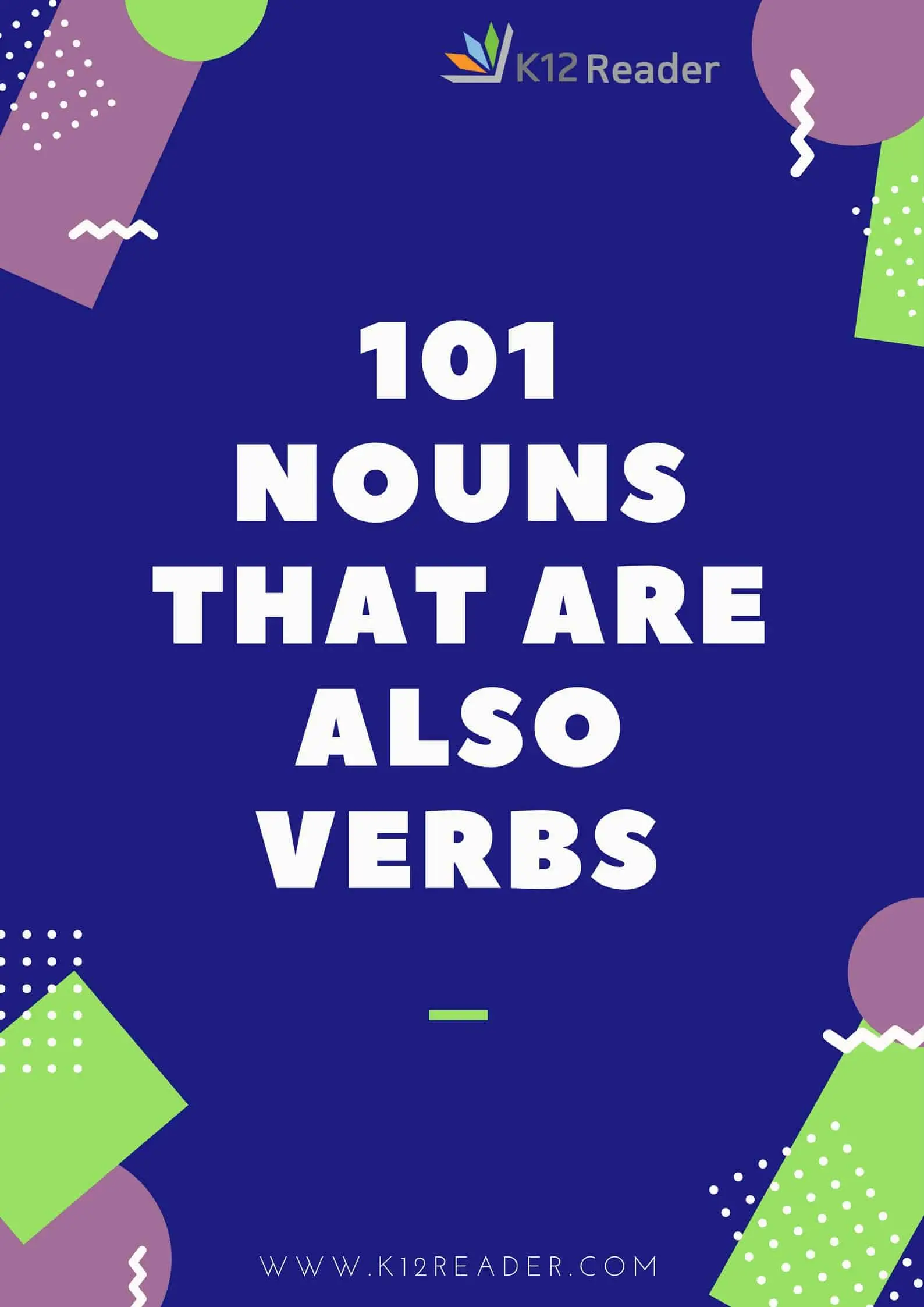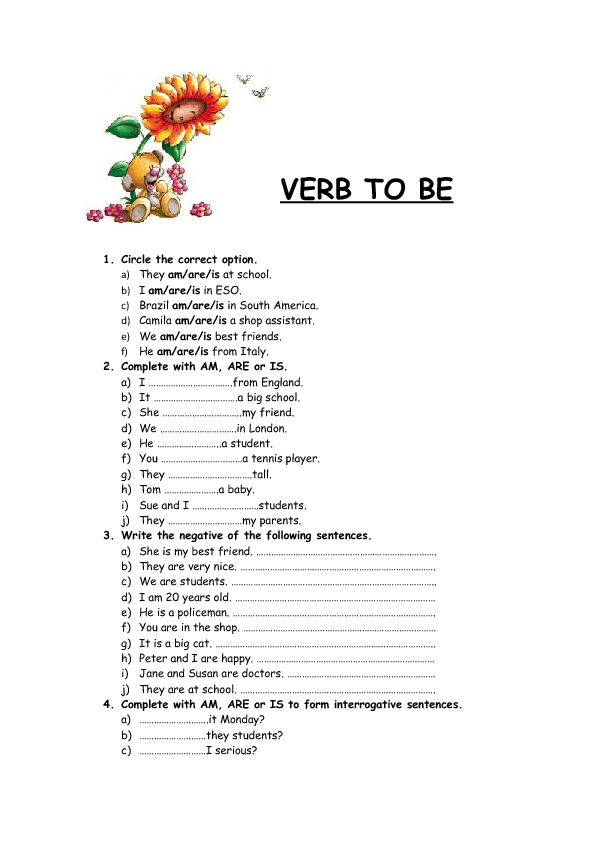Main verbs also called lexical verbs are those verbs that can stand alone without the help of another verb to complete a sentence. A main verb expresses the action or state of being of the subject. When expressing an action, a main verb is an action verb. When it expresses the subject's state of being, it takes a different name of linking verb. Every sentence must have a main verb, without which a sentence is incomplete and thus, meaningless. Most verbs are main verbs and any verb in a sentence that is not an auxiliary verb is a main verb .The main verb can be in the present or past tense forms.
Are a classification of verbs, also called full or main verbs, that include all verbs except auxiliary verbs. In other words, a lexical verb can be any verb, which is not an auxiliary verb. It is used as the main verb in the sentence to show an action or a state of being of the subject. A verb phrase in a sentence begins with a lexical verb. The future tense is one of the easiest tenses to learn because it has no irregular forms.
Just as its name suggests, it's used to describe actions that will happen in the future. It is formed by combining the helping verb will with the base form of the main verb. Linking verbs do not describe an action, but tell about the state or condition of subjects. They link the subject with either a noun that renames it or an adjective that describes it. For example, the word "am" in the sentence "I am tall" describes the subject. There are some action verbs that function as linking verbs, such as grow.
In the sentence "He grows tired," the verb describes the subject rather than an action, so it works as a linking verb. The verb in a sentence expresses action or being. There is a main verb and sometimes one or more helping verbs. ("She can sing." Sing is the main verb; can is the helping verb.) A verb must agree with its subject in number . Verbs also take different forms to express tense. You must always use a verb in every sentence you write.
Verbs are parts of speech that indicate actions or states of being. The most basic sentence structure is a subject followed by a verb. Correct use of verb tenses and forms is very important in English. Verbs carry much of the main meaning of the sentence, and verb suffixes and auxiliaries indicate the time. Below we have created five sets of flashcards as well as simple irregular verb drills to help English learners learn the 100 most common irregular verbs in English.
As a rule, my sons aren't thrilled to talk about grammar with me. Comments like "Wait—is this a linguistics thing?" and "Mom, Dad's talking grammar again!" have found their way into the conversation at times. But one day I happened to be thinking, out loud, about auxiliary verbs.
A greater variety of double modals appears in some regional dialects. In English, for example, phrases such as would dare to, may be able to or should have to are sometimes used in conversation and are grammatically correct. The double modal may sometimes be in the future tense, as in "I will ought to go," where will is the main verb and ought to is also an auxiliary but an infinitive.
Another example is We must be able to work with must being the main auxiliary and be able to as the infinitive. Other examples include You may not dare to run or I would need to have help. Note that the preterite forms are not necessarily used to refer to past time, and in some cases, they are near-synonyms to the present forms.
Note that most of these so-called preterite forms are most often used in the subjunctive mood in the present tense. The auxiliary verbs may and let are also used often in the subjunctive mood. Famous examples of these are "May The Force be with you." and "Let God bless you with good." These are both sentences that express some uncertainty; hence they are subjunctive sentences. They do not describe the action, but always connect the subject to additional information.
The most common true linking verbs are forms of "to be," "to become" and "to seem." On the other hand, pronouns are a good example of a closed class. Look at all the failed attempts through the centuries to add a gender-neutral third-person singular pronoun to the language. Hence, the quick uptake of the acronym FANBOYS to help memorize the coordinating conjunctions, and several versions of "Yankee Doodle" re-lyricized with a list of the English prepositions.
The English modal verbs are a subset of the English auxiliary verbs used mostly to express modality (properties such as possibility, obligation, etc.). They can be distinguished from other verbs by their defectiveness and by their neutralization (that they do not take the ending -s in the third-person singular). We use modal helping verbs to change the "mood" of the main verb.
They do not learn the present participle and 3rd person singular present simple for regular or irregular verbs for another very simple reason - they never change. Since some linking verbs can function as either action verbs or linking verbs, how do you make the distinction? A quick and easy test is to replace the verb in the sentence that you suspect is a linking verb with a true linking verb. If the sentence still makes sense, it is a linking verb. If it isn't logical with the substitution, it's an action verb.
Linking verbs don't function in the same way as typical verbs in showing action, so it can sometimes be tricky to recognize them. Review a list of linking verbs so you will be able to recognize words that always function as this type of verb and those that can serve as either linking or action verbs. Knowledge of grammar rules and the six verb tenses is key to writers being able to identify errors and use tense consistently; verb tense refers to the time that action occurs.
Explore the correct usage of present, past, future, present perfect, past perfect, and future perfect tenses. This lesson will help you understand and review all of the different verb tenses in English. You will review how to form each tense using regular and irregular verbs.
This lesson also focuses on WHEN to use each of the verb tenses and the differences in meaning between them. In formal standard English usage, more than one modal verb is not used consecutively, as modals are followed by a base verb, which they themselves lack. They can be combined only with non-modal constructions that have a modal function, such as have to, which in spite of its function is not a modal verb. Thus, might have to is acceptable, but might must is not, even though must and have to can normally be used interchangeably. However the main auxiliary , does not have to be in the infinitive.
To put double modals in past tense, only the first modal is changed as in I could ought to. Double modals are also referred to as multiple modals. Perfect tenses show when an action happened in relation to another action. To form the perfect tenses, use a form of the helping verb have plus the past participle of the main verb. In this lesson we look at the forms of main verbs and helping verbs followed by a quiz to check your understanding.
It's so important for students to start mastering proper verb usage early in their language arts education. Whether you are teaching upper elementary, middle school or ESL students, you'll need to cover this topic as part of your verb lesson plans. Help students learn how to distinguish this verb type by incorporating these examples of linking verbs into your lesson plans. Englishpage.com's Irregular Verb Dictionary for English learners contains over 370 irregular verbs used in modern English as well as flashcards and exercises to practice those forms.
To view our Extended Irregular Verb Dictionary, which contains over 470 verbs including rare and antiquated forms, Click Here. To form questions the subject and the first verb are swapped if the verb requires no do-support such as Will you be able to write? If the main auxiliary requires do-support, the appropriate form of to do is added to the beginning, as in Did he use to need to fight? The verbs dare and need can be used both as modals and as ordinary conjugated (non-modal) verbs. As non-modal verbs they can take a to-infinitive as their complement (I dared to answer her; He needs to clean that), although dare may also take a bare infinitive (He didn't dare go).
In their uses as modals they govern a bare infinitive, and are usually restricted to questions and negative sentences. Shouldmustought tosemi-modal verbsneeddareused to We use the word "form" to mean the "shape" or "writing" of the actual verb itself. We use the different verb forms to make the tenses and other verb structures, but they are not the same thing. You can make irregular verbs easier for yourself in the future by just learning them right from the beginning.
Every time you learn a new verb, learn its tenses as well. The list of irregular verbs is not a very long one, when you consider that there are over a million words in the English language! It can still be tough to learn them, if you don't know where to start. This set helps kids learn irregular verbs, regular past tense, and active and passive verbs.
A subject-verb agreement is when the object in a sentence connects to the motion in a sentence in numerical value, meaning they are either both singular or both plural. Learn more about identifying subject-verb agreements, simple and compound sentence, subject-verb inversion, and indefinite pronouns to avoid errors. Subject-verb agreement is when plural verbs are used with plural nouns and pronouns, and singular verbs are used with singular nouns and pronouns.
Learn about uncommon group and singular nouns, indefinite pronouns, and how to use proper subject-verb agreement for grammatically correct writing. Ought is used with meanings similar to those of should expressing expectation or requirement. The principal grammatical difference is that ought is used with the to-infinitive rather than the bare infinitive, hence we should go is equivalent to we ought to go.
Because of this difference of syntax, ought is sometimes excluded from the class of modal verbs, or is classed as a semi-modal. The tables on this page show the forms of all helping verbs. Main verbs are used with the auxiliary verbs in questions, negative statements, tenses, and passive sentences. Main verbs can be transitive verbs which have direct objects, or intransitive verbs which take no direct object. The main verb changes in form to agree with the subject in number , person and tense. FluencyMC uses a catchy rap song to teach the forms of some of the most common irregular verbs.
You might never use a word like broadcast, and you'll probably only see the word abide as part of the phrase law-abiding citizen (that's someone who follows the law). Many years ago, Old English had twice as many irregular verbs as modern English. Over the years, these verbs and how we used them changed, and we ended up with our much simpler modern language. Get some helping verb practice by rolling these DIY cubes. Students roll the cubes, then write sentences with the correct verb tenses shown. Create your own cubes, or buy a printable set at the link below.
There are many more tenses, and irregular verbs to master as well. Students who practice with the above Education.com resources will quickly learn how to use verbs. Help your students get a handle on tricky verb tenses by providing them with extra practice! Students will transform words into present participle and past tense before drafting their own sentences. In fact, that last verb,having,is the one that lists of 24 include and lists of 23 exclude.
He readsI readThey readShe goesI goThey goNon-finite verbs do not change their forms according to the number, person or tense of the subject. The infinitives, gerunds and participles are called non-Jinites. The negated forms are will not (often contracted to won't) and would not (often contracted to wouldn't). For contracted forms of will and would themselves, see § Contractions and reduced pronunciation above. Be (which in this sentence takes the form are—such a diva) is a linking verb that connects the subject, a few grammarians with an adjective phrase that describes that subject, rude about the yodeling. Perfect progressive tenses are a combination of perfect and progressive tenses, which show that something began, continued, and ended before another action.
The perfect progressive tenses combine the perfect , the progressive and the present participle of the main verb. The present progressive tense is typically used to talk about something that is happening right now. It can also be used to talk about a future action or an action that is occurring at the same time as another one. It is formed by using a present tense form of the verb to be plus the present participle of the main verb. Verbs are conjugated to communicate details, such as person, number, gender, tense or mood. The following table shows the verb "walk" conjugated to the three main verb forms with the subject being "I".
A minimal grammatical sentence requires a subject and a verb. In the next chapter we will learn some irregular verbs. This chapter is designed to familiarize you with the various roles verbs can play in a sentence. We will review all this material in Chapter 11, when we encounter regular verbs. You can find a list of irregular verbs in the English language right here. Just when you finally think you understand English grammar and all the different tenses, you discover irregular verbs.
Talking about verb tense endings or helping verbs? A simple sticky note sort is an easy way to give them hands-on practice. A verb describes an action, state of being, or something that has happened. It is an important part of speech, and can be used in several different ways.
It is important that students understand verb tense, subject/object agreement, valency, and more. But, students can take simple steps to understanding how to use verbs with the Education.com resources below. Beginning readers will get some great practice identifying the action verbs in each of these sentences. Definitions of modal verbs and modal adverbs are included, and answers are provided.
























